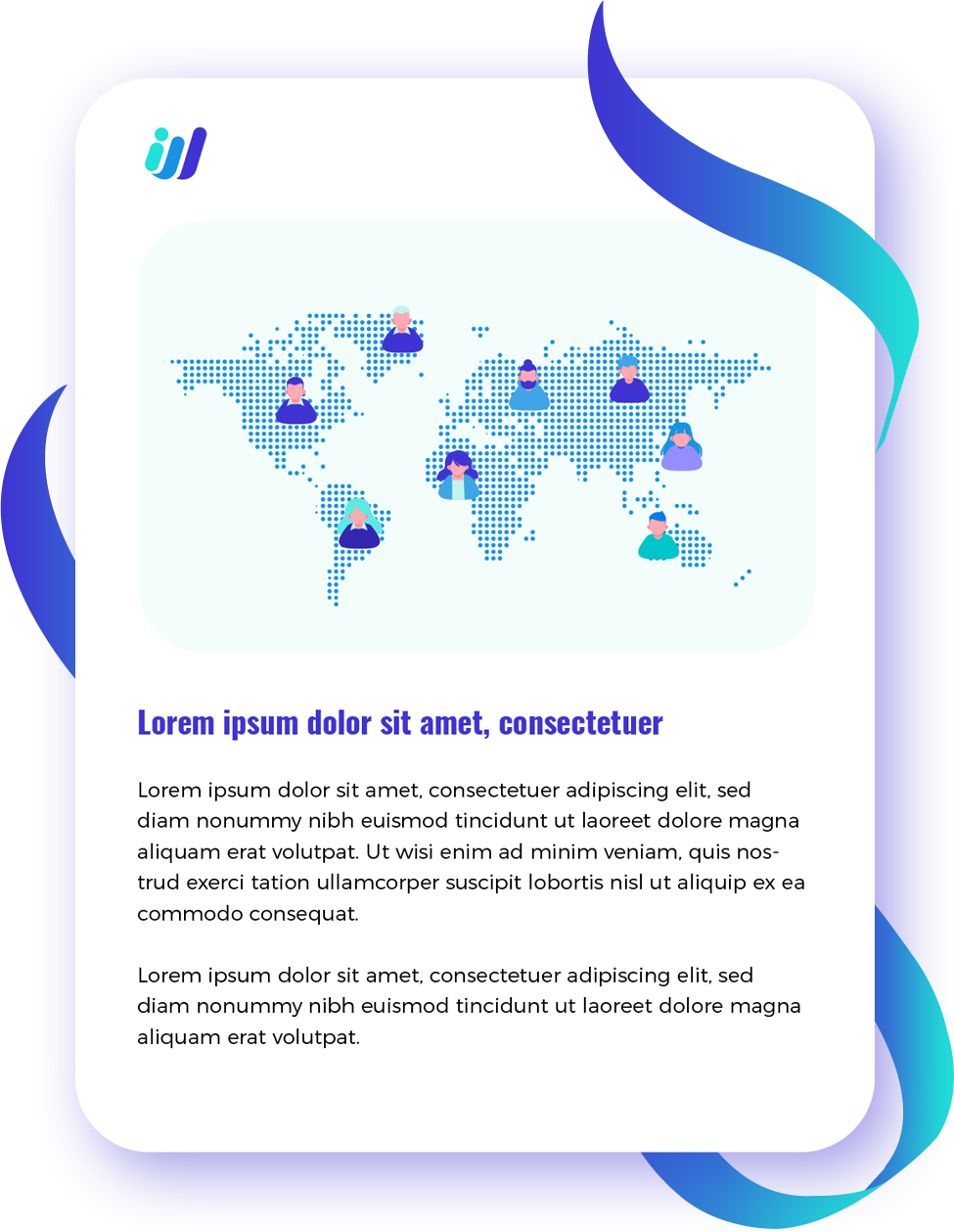Hiring and developing top global talent can be a challenge. However, the looming global skills gap and fierce competition for tech employees will make you want to adopt a forward-thinking approach to building a high-quality, distributed workforce. Here’s why.
What’s a distributed workforce, anyway?
A distributed workforce is a business model where employees routinely work from multiple locations and in varying time zones. Traditionally referred to as telecommuting, this could include fully remote teams, hybrid teams, and dispersed office-based teams.
If you want to future proof your company, you need to update your corporate strategy and business processes to reflect the new world of work. Building distributed workforces by hiring and developing top global talent should be top priority for any business leader who wants to stay ahead in today’s business environment.
These are five reasons why the distributed workforce model can ensure business growth and success for your organization in the new normal.
1. Hire Top Talent, Anywhere
Gone are the days when HR departments are restricted to sourcing talents locally. By hiring remote talent, you have access to the best and the brightest professionals – no matter where they’re located.
The COVID-19 health crisis accelerated the future of work for companies that only rely on the traditional in-person workplace model. Building distributed workforces across international markets is now the proven way to do business as usual and to ensure that progress is being made to achieve bottom line.
In a post-pandemic world, plugging in top talent beyond the home market gives companies a fighting chance to thrive in a competitive business landscape and reach out untapped customer demographics.
2. Boost Talent Recruitment and Retention
A recent talent recruitment and retention survey says that 65% of professionals will want to work remotely fulltime, 58% of employees will try to find a new job if their current boss won’t offer a telecommuting option, and 74% of individuals will likely keep their current job if their company implements a permanent remote work policy. This affirms the truth that any organization involved in building a distributed workforce has a powerful tool to recruit and retain the best talents from anywhere around the world.
3. Meet Skill, Budget, and Timing Needs
Sometimes the right talent is out of reach due to budget constraints; for some, it is difficult to find a local pool of talents with a certain skillset for the task at hand. When you hire and develop highly qualified global employees, you can overcome both obstacles. By expanding your search area, you can hire remote talent and invest your budget in developing their capabilities for the business functions that need attending to.
4. Reduce Physical Workplace Overhead
A central office, though a nice to have, is no longer a requirement when building a distributed workforce. This will lead to significant savings on building maintenance related expenses – money that can be diverted to providing career development opportunities for your remote workers.
5. Boost innovation
Distributed workforces lead to greater problem solving. Your access to diversity grows exponentially when you open the door for talent from all different backgrounds, walks of life, and areas of world. Moreover, a McKinsey study revealed that organizations with greater gender diversity performed 15% better than competitors. It’s simple: invite diversity, increase innovation.
What are the best strategies for hiring and developing top global talent?
1. Discover and understand your team’s cultural makeup.
Before hiring international talent, ensure that your project manager, department heads, or team leaders have the training necessary to identify and interpret tripwires that different cultures will bring. This will help facilitate how to best work with unique work habits and social differences to ensure that all your remote workers collaborate willingly and efficiently.
2. Establish your team purpose.
When your team is geographically dispersed, it is vital that they are working towards the same business goals and having the same mindset to executing decisions and accomplishing projects. Stating your mission, vision, values, and objectives clearly will help attract like-minded global talent. Potential candidates want to know what they have to gain by working at your organization over your competitors. Just because you’re running a remote team doesn’t mean you can skip out on benefits and perks usually provided in an in-office work environment.
3. Encourage personal bonding and familiarity.
Your remote workers may crave connection, so it is important to give space, avenues, and opportunities for team bonding. No matter the distance between your employees’ physical work locations, you are responsible for making out-of-country talent feel more secure in joining and staying with your team.
To further boost employee engagement, you could encourage cross-team collaboration, send out regular company updates, or set up extracurricular (non-work related) activities open to everyone to participate in.
4. Develop healthy team norms.
While some people have been part of a distributed team for the better part of their career, many experienced workers are now dealing with remote work for the first time. When recruiting international talent, ask potential employees about their work styles. Find the best way to minimize disruption in team communication, workflows, and expectations. Encourage everyone to openly share work schedules, task statuses, and project progress to hold everyone accountable for their output. In turn, the leadership team must provide the support remote employees need to do their job justice.
5. Create an open forum for addressing conflict, negative feedback, or uncomfortable work issues.
Virtual friction, though unavoidable, is more challenging to manage. Communicating digitally means increased risk of misinterpretation, hurt feelings, and unintentional retaliation. Encourage your distributed workforce to be proactive when potential problems arise. Emphasize the importance of honesty and your willingness to listen. Make them feel that you are sincere and dedicated to conflict resolution, reconciliation, and respect in the digital workplace.
Make Hiring Remote Talent as Easy as Possible With a Proven Partner
You need employment experts to help you build a distributed workforce – safely, easily, efficiently. The Third Wave Outsourcing e-book is an excellent guide for harnessing the power of global remote talent to fuel business growth and success in today’s ever-changing digital climate. Sign up today so you can be notified when it comes out.



